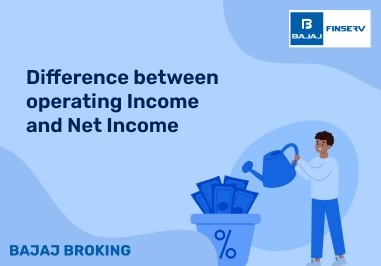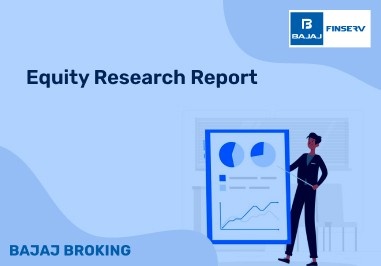An equity research report is a comprehensive financial document that provides an in-depth analysis of a company's business, financial performance, and stock valuation. It is prepared by equity analysts who evaluate various aspects of a company, including its revenue, profitability, industry position, competitive landscape, and future growth potential. These reports serve as a guide for investors looking to make informed decisions about buying, selling, or holding a stock.
The structure of an equity research report typically begins with an executive summary that provides a snapshot of the company’s financial health, recent performance, and analyst recommendations. This is followed by a detailed company overview, which covers the business model, product offerings, revenue streams, and key management personnel. Analysts also conduct a thorough industry analysis, examining market trends, competitive forces, and external factors affecting the company’s operations.
A key component of an equity research report is the financial analysis section, which includes income statements, balance sheets, and cash flow statements. Analysts assess financial ratios such as Earnings Per Share (EPS), Price-to-Earnings (P/E) Ratio, and Return on Equity (ROE) to evaluate the company's profitability and efficiency. They also use valuation models like Discounted Cash Flow (DCF) and relative valuation methods to estimate the stock’s intrinsic value.
Additionally, the report outlines potential risks that could impact the company's future performance, such as economic downturns, regulatory changes, or shifts in consumer demand. It concludes with a target price for the stock and an investment recommendation, typically categorized as Buy, Hold, or Sell.
An equity research report is a critical tool for investors and financial professionals, offering data-driven insights that help assess a company's financial position and potential for future growth.
Types of Equity Research Reports
Equity research reports come in various formats, each serving a specific purpose in analyzing companies and market trends. These reports help investors track financial performance, industry developments, and stock valuation changes. Below are the key types of equity research reports:
Initiation Reports – These are the first reports published when an analyst begins covering a company. They provide a detailed overview of the company’s business, financials, industry trends, and valuation. Analysts include an initial investment recommendation (Buy, Hold, or Sell) based on extensive research.
Update Reports – Published periodically to provide insights on recent developments such as earnings reports, management changes, or industry shifts. These reports highlight any changes in the analyst’s view, stock valuation, or target price. Investors use these to track the company’s performance over time.
Earnings Review Reports – Released after a company announces its quarterly or annual earnings. They summarize key financial results, compare them with analyst expectations, and explain any deviations. These reports help investors understand whether the company is meeting growth projections.
Thematic Reports – Focus on broader market trends, industry outlooks, or economic factors affecting multiple companies. They provide insights into emerging opportunities or risks within specific sectors.
Sector Reports – Cover multiple companies within a particular industry, comparing their financial performance and competitive positioning. These reports offer valuable insights for investors looking to gain exposure to a specific sector.
Flash Reports – Brief reports released after significant company events such as mergers, acquisitions, or regulatory changes. They offer quick insights on how the news impacts the stock and potential investment strategies.
Components of an Equity Research Report
An equity research report is structured to provide a comprehensive analysis of a company’s financial health, valuation, and investment potential. It typically consists of the following key components:
Executive Summary – This section provides a brief overview of the report, highlighting the company’s stock recommendation (Buy, Hold, or Sell), key financial metrics, and major findings. It helps investors quickly grasp the core insights.
Company Overview – This includes details about the company’s business model, products and services, revenue streams, and competitive positioning within its industry. Analysts also assess management quality and strategic direction.
Industry Analysis – This section evaluates the industry in which the company operates, covering market trends, competitive forces, regulatory factors, and macroeconomic influences. It helps investors understand external factors impacting the company.
Financial Analysis – Analysts present key financial statements such as the income statement, balance sheet, and cash flow statement. They assess revenue growth, profitability, debt levels, and financial efficiency using key ratios like ROE and P/E ratios.
Valuation Analysis – This section estimates the fair value of the company’s stock using valuation models such as Discounted Cash Flow (DCF), P/E multiples, and Enterprise Value-to-EBITDA (EV/EBITDA) ratios. The goal is to determine whether the stock is overvalued, undervalued, or fairly priced.
Risk Analysis – Analysts identify potential risks that could impact the company’s future performance, such as economic downturns, regulatory changes, industry competition, or company-specific weaknesses.
Investment Thesis & Recommendation – This concluding section summarizes the key reasons for the analyst’s rating (Buy, Hold, or Sell) and provides a price target based on the valuation analysis. It also includes any potential catalysts that could drive stock price movement.
Best Practices for Equity Research
Equity research requires a disciplined approach to ensure accurate, objective, and insightful analysis. By following effective practices, analysts can produce high-quality reports that help investors make informed decisions. Below are the key practices in equity research:
Conduct Thorough Fundamental Analysis – A deep dive into a company’s financial statements, including revenue trends, profit margins, and key ratios like ROE and P/E is essential. Understanding the business model, industry positioning, and competitive advantages helps in making accurate assessments.
Use Multiple Valuation Methods – Relying on a single valuation method can lead to biased conclusions. Analysts use a combination of DCF, P/E multiples, and EV/EBITDA to ensure a well-rounded valuation approach.
Perform Industry and Macroeconomic Analysis – Evaluating the industry landscape, market trends, regulatory changes, and economic conditions help in assessing broader risks and opportunities. A company’s performance should be analyzed in comparison to its competitors to gauge relative strength.
Maintain Objectivity and Avoid Bias – Investment recommendations should be data-driven and free from external influences. Transparency in assumptions, financial models, and methodologies enhances credibility and investor confidence.
Regularly Update Reports – Keeping equity research reports up to date with new earnings data, financial performance updates, and major corporate developments ensures investors have the latest insights. Events like mergers, acquisitions, or regulatory shifts can significantly impact stock valuation.
Ensure Clear and Concise Reporting – Presenting financial data in a structured, well-organized manner makes reports more accessible. Using charts, tables, and summaries helps in effectively communicating insights to investors at all levels.
Following these practices ensures that equity research remains a valuable tool in financial analysis, supporting informed investment decisions.
Example of Equity Research Report
An equity research report provides a comprehensive analysis of a publicly traded company, assisting investors in making informed decisions. Here's an example of such a report, focusing on Kraft Foods Group:
1. Recommendation
Rating: Buy
Target Price: $65
Current Price: $58
2. Recent Updates
Kraft Foods has launched a new line of organic products, aiming to capture the growing health-conscious consumer segment. Additionally, the company reported a 5% increase in quarterly revenue, driven by strong sales in its snack division.
3. Investment Thesis
Market Leadership: Kraft Foods holds a dominant position in the processed foods industry, with a portfolio of well-established brands.
Product Innovation: The company's focus on introducing healthier product options aligns with current consumer trends, potentially leading to increased market share.
Financial Performance: Consistent revenue growth and robust profit margins indicate operational efficiency and effective cost management.
4. Valuation
Price-to-Earnings (P/E) Ratio: 18x, below the industry average of 20x, suggesting the stock is undervalued.
Discounted Cash Flow (DCF) Analysis: Projected free cash flows imply an intrinsic value of $70 per share, indicating potential upside.
5. Risks
This structured approach ensures that investors receive a thorough evaluation of the company's performance, prospects, and potential challenges.
Conclusion
An equity research report is a structured financial analysis that helps investors assess a company’s financial health, competitive position, and overall investment potential. These reports come in different formats, such as initiation reports, earnings updates, and sector analyses, each serving a distinct purpose. A comprehensive report typically includes an executive summary, company overview, financial analysis, valuation methods, and investment risks, ensuring a well-rounded evaluation. Good practices in equity research emphasize detailed fundamental analysis, multiple valuation methodologies, industry benchmarking, objectivity, and clarity in reporting to enhance decision-making.
Equity research reports play a vital role in helping investors make informed decisions by providing data-driven insights and forward-looking market assessments. They act as valuable tools for identifying growth opportunities, mitigating risks, and understanding industry trends.













